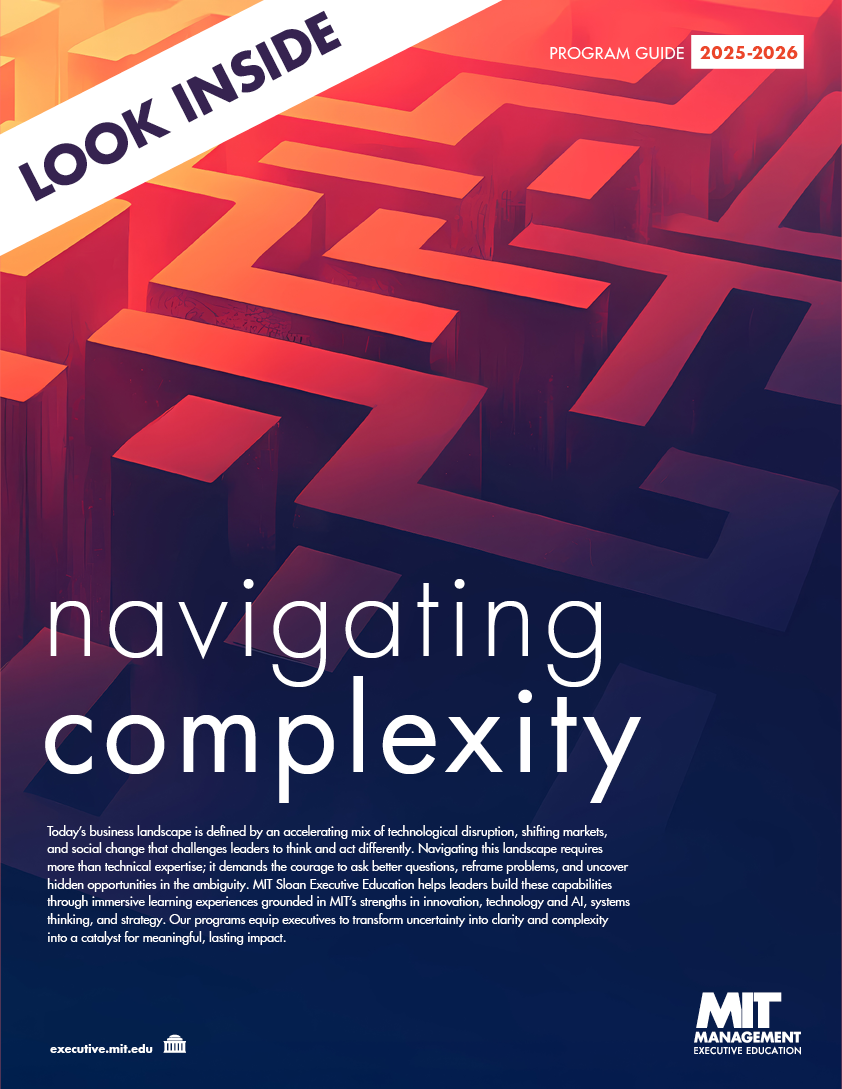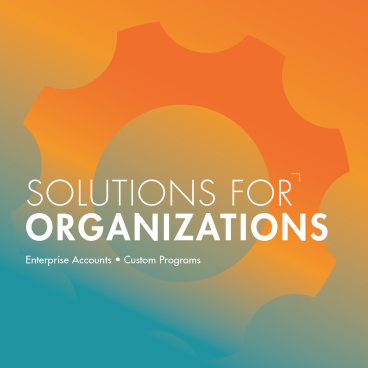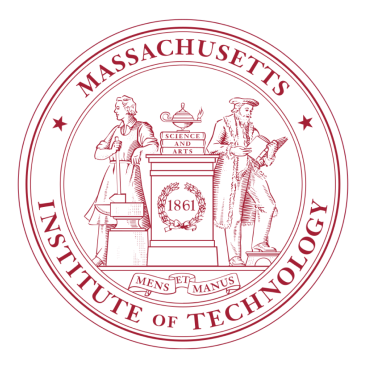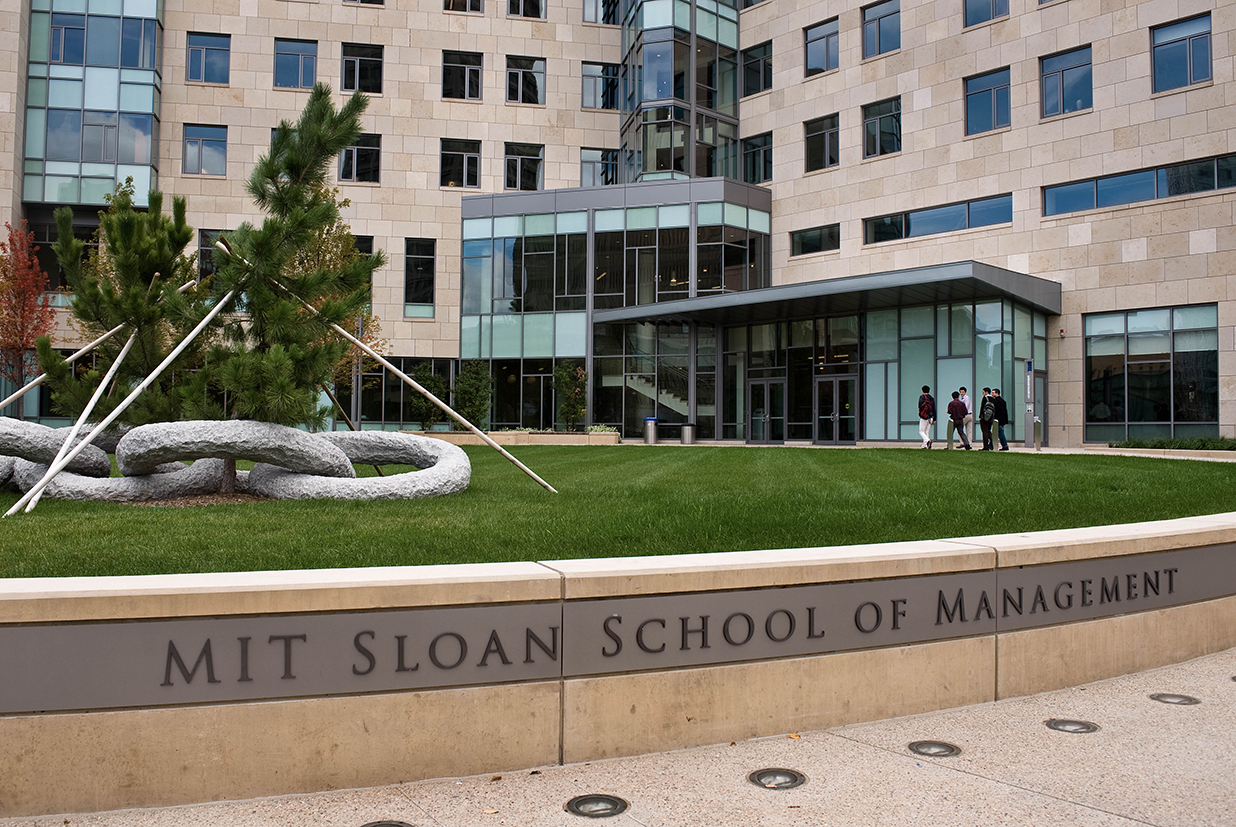The tension between running the business today and preparing it for tomorrow is the challenge of performing and transforming at the same time, or, as my MIT Sloan colleague Stephanie Woerner vividly put it in a recent LinkedIn Live discussion, “It’s like patting your head while rubbing your stomach.”
That conversation between Stephanie, Principal Research Scientist and Director at MIT CISR, and Howard Yu, LEGO Professor of Management and Innovation at IMD, introduced our Future-Ready Enterprise Academy, a joint MIT-IMD initiative designed to help executives navigate exactly that paradox. Listening to them, I was struck by how practical their insights are for anyone trying to lead a complex organization into an uncertain future.
See more: Meet the faculty in the LinkedIn Live info session.
Start with leadership and language
Stephanie began with a simple truth: transformation starts at the top. If your leadership team and your board aren’t aligned, the rest of the organization can’t follow.
She emphasized the need for a common language around what “future ready” actually means. That shared vocabulary gives everyone from the boardroom to the front line the same framework for making decisions, prioritizing investments, and defining success. Without it, even the most visionary strategy gets lost in translation.
Perform and transform. Simultaneously!
Howard framed the challenge as one of dual focus. Future-ready organizations, he said, must “perform and transform at the same time.” They need to deliver operational excellence while simultaneously scaling new capabilities. That requires discipline: knowing what to focus on, what to defer, and where to invest in long-term growth even during volatile times.
In his research at IMD’s Future Readiness Center, Howard has observed that the companies that endure are those that know how to do both. They continue to optimize efficiency while building entirely new engines of innovation.
Simplify first, then go fast
Stephanie and Howard agreed that organizational complexity is one of the biggest barriers to transformation. The solution, Stephanie argued, is to move from projects to platforms.
Future-ready companies identify the essential capabilities that power their business, whether in data, cybersecurity, finance, or customer engagement, and build modular platforms around them. These can be reused and scaled across the enterprise, freeing up resources for experimentation. “You don’t have to boil the ocean,” she said. “Start small, simplify, and build from there.”
That’s not just a technology choice; it’s a leadership philosophy. Simplification creates agility. It enables faster decision-making, clearer accountability, and more room for innovation.
Transformation takes time and commitment
Stephanie shared an important data point from MIT CISR’s research: on average, organizations begin to see tangible transformation results after about 21 months. That finding is as humbling as it is hopeful. It reminds us that meaningful change doesn’t happen overnight, but it also proves that perseverance pays off.
The leaders who succeed are those who stay the course, who communicate consistently, govern wisely, and celebrate early wins to sustain momentum.
AI and data: foundations for the future
Naturally, the conversation turned to artificial intelligence. Both Howard and Stephanie were clear-eyed about it: AI may be the technology of the moment, but its impact depends entirely on how well a company manages its data.
Stephanie described data as the connective tissue of the future-ready enterprise, the element that underpins both operational efficiency and customer innovation. Howard built on this point, warning against chasing every new AI application without first building strong “data moats,” sources of insight and advantage that remain valuable even as technologies evolve.
It’s not about being a tech company, they argued. It’s about understanding what data matters most to your business and using it to inform better decisions across the enterprise.
Learning from ecosystems
Another hallmark of the Future-Ready Enterprise Academy is the chance to learn from the world’s most dynamic innovation ecosystems—Kendall Square in Cambridge and Singapore’s tech hub.
Participants will explore firsthand how startups and global companies alike are building agility, leveraging ecosystems, and accelerating transformation. As Howard put it, “Seeing is believing.” Understanding how companies in different regions approach innovation helps leaders return home with a fresh perspective and a clearer idea of what’s possible in their own organizations.
A playbook for real impact
What makes the Academy distinctive is its focus on real-world application. Each participant brings a real-life strategic challenge into the program. Faculty provide frameworks and coaching to shape it into an actionable roadmap, which leaders refine between modules. The result is not a theoretical exercise but a personalized playbook for transformation.
Howard summed it up well: “The goal is not just to make your business future-ready, but to make yourself a future-ready leader.”
Becoming future-ready
As Stephanie and Howard closed their conversation, they reminded us that future readiness is less about prediction than preparation. It’s not a one-time project, but a sustained capability built on leadership alignment, clear priorities, strong data foundations, and a willingness to simplify before scaling.
It’s the same ethos we bring to all our programs at MIT Sloan Executive Education: helping leaders not just adapt to change, but shape it. The Future-Ready Enterprise Academy, offered jointly by MIT Sloan and IMD, embodies that mission—combining world-class research, global collaboration, and practical frameworks that leaders can apply immediately.
Because the future isn’t waiting. And neither should we!








